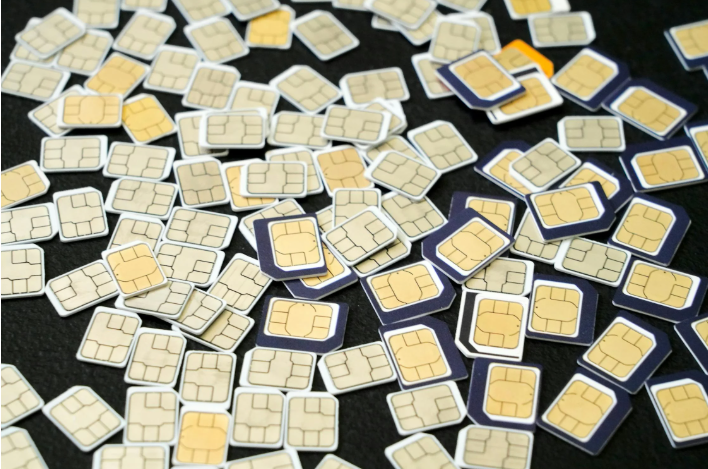The mobile communication landscape is undergoing a significant transformation with the advent of eSIM technology. Embedded SIMs (eSIMs) are gradually phasing out traditional physical SIM cards, offering a new paradigm in connectivity. This article delves deep into the differences between eSIMs and physical SIMs, highlighting their advantages, drawbacks, and the implications for consumers.
Understanding SIM Technology

What is a Physical SIM?
A physical SIM (Subscriber Identity Module) is a small, removable card inserted into your mobile device. It stores your International Mobile Subscriber Identity (IMSI) and other credentials, allowing your device to connect to your carrier’s network. The Times of India
What is an eSIM?
Manufacturers embed eSIMs directly into a device’s hardware. Unlike physical SIMs, users can reprogram eSIMs remotely to switch carriers or plans without inserting a new card. The Times of India+3The Times of India+3Holafly+3iRoamly+2The Times of India+2The Times of India+2
Advantages of eSIM Technology
1. Seamless Carrier Switching
eSIMs allow users to switch carriers or plans without physically changing the SIM card. This is particularly beneficial for frequent travelers or those seeking better network deals. For instance, Vodafone’s recent promotion in London enabled non-customers to access a free seven-day trial with 50GB of data, 500 minutes, and 500 texts without changing their SIM card or phone number. Technical News
2. Enhanced Device Design
Eliminating the need for a SIM tray frees up space within the device, allowing manufacturers to design slimmer phones with larger batteries or improved waterproofing.
3. Improved Security
Since eSIMs are embedded within the device, they are less susceptible to theft or tampering. This integration enhances security by reducing the risk of SIM swapping or cloning. Cloudwards
4. Environmental Benefits
eSIMs contribute to environmental sustainability by eliminating the need for physical plastic cards and reducing electronic waste. Cybernews
Drawbacks of eSIM Technology
1. Limited Carrier Support
Not all carriers worldwide support eSIM technology. This limitation can pose challenges for users in regions where eSIM adoption is still in progress. Android Authority+5Cybernews+5Yohomobile+5Yohomobile
2. Device Compatibility Issues
eSIM functionality is primarily available in newer smartphone models. Users with older devices may not have access to eSIM features, necessitating hardware upgrades. The Times of India+1Cloudwards+1iRoamly
3. Complexity in Switching Devices
Transferring an eSIM profile to a new device can be more complex than swapping a physical SIM card. It often requires contacting the carrier or using specific apps to facilitate the transfer. Cloudwards+4Cybernews+4Vietnam Visa+4Android Authority
Advantages of Physical SIM Cards
1. Wide Compatibility
Physical SIM cards are universally compatible with most mobile devices and carriers, making them a reliable choice for users worldwide. Cybernews+2The Times of India+2The Times of India+2
2. Ease of Transfer
Switching devices with a physical SIM is straightforward—simply remove the SIM from one device and insert it into another. iRoamly
3. Familiarity
Many users are accustomed to the process of using physical SIM cards, making them a comfortable choice for those less inclined toward new technologies.
Drawbacks of Physical SIM Cards
1. Physical Vulnerability
Physical SIM cards can be lost, damaged, or stolen, leading to potential security risks and the inconvenience of obtaining replacements.
2. Inconvenience in Switching Carriers
Changing carriers with a physical SIM often involves visiting a store or waiting for a new SIM card to be delivered, which can be time-consuming. TechCult+5Vietnam Visa+5The Times of India+5
3. Limited Storage
Physical SIMs typically store only one carrier profile, limiting the flexibility to switch between multiple plans or numbers. iRoamly
eSIM vs. Physical SIM: A Comparative Overview
| Feature | eSIM | Physical SIM |
|---|---|---|
| Form Factor | Embedded within the device | Removable plastic card |
| Carrier Switching | Remote activation via app or QR code | Requires physical replacement |
| Device Compatibility | Limited to newer models | Compatible with most devices |
| Security | Less prone to theft or tampering | Can be physically removed or cloned |
| Environmental Impact | Reduces plastic waste | Generates plastic waste |
| Ease of Transfer | May require carrier assistance | Simple physical transfer |
Future Outlook The Rise of eSIMs
The adoption of eSIM technology is expected to accelerate, with more carriers and device manufacturers embracing this innovation. As infrastructure and support improve, eSIMs are poised to become the standard in mobile connectivity, offering users greater flexibility, security, and convenience.
The transition from physical SIM cards to eSIMs marks a significant evolution in mobile technology. While eSIMs offer numerous benefits, including enhanced security, environmental advantages, and design improvements, they also present challenges related to compatibility and carrier support. As the technology matures, users can expect a more seamless and integrated mobile experience.

